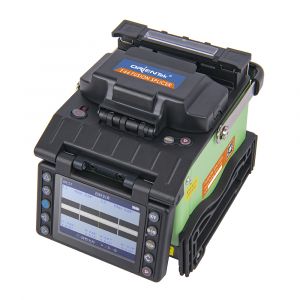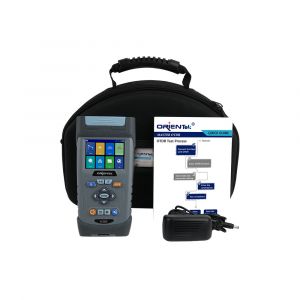Usually, there are many common issues of using fusion splicing machines, many people feel confused when fixing the machines, today let’s see these issues and make the analysis of how to avoid them happen properly.
Basic principle of fusion welding
Firstly, the fusion splicer needs to correctly locate the core of the optical fiber and align it accurately. Then, the optical fiber is melted by a high-voltage discharge arc through the electrodes and the machine continue to pushing forward fusion splicing.
Estimation principle of welding loss
The estimation of fusion loss is based on factors such as misalignment, deformation, end face cutting angle, and the presence of bubbles in the fiber joint. The true loss still needs to be measured through specialized optical meters such as light sources, optical power meters, or OTDR.
Common problems of fiber optic fusion splicer
1. The welding loss is too high
(1) The end face of the optical fiber is not clean with dust, or there are dirtiness on the V-shaped groove, or there are dirtiness on the optical fiber fixing bracket.
(2) The angle difference between the cutting end faces of the optical fiber is too large;
(3) The optical system has problems, and the objective lens has caused estimation errors;
(4) Insufficient or excessive welding strength, resulting in displacement of discharge position;
(5) There is an error in the welding machine program.
2. The welding machine cannot weld normally, indicating a welding failurewith a red alarm
(1) Excessive fusion loss, or fiber to fiber failure, or fiber propulsion failure;
(2) The end face of the optical fiber is uneven or has dirtiness
(3) Problem with optical system
(4) There is an issue with the welding machine program
3. The fusion splicer prompts to find the left fiber butcannot find the right fiber
(1) Incorrect placement of left fiber (right fiber) or dirtiness in V-groove
(2) Motor propulsion system malfunction
(3) Optical system related components malfunction, including objective lenses, reflectors, and related control circuits.
4. The welding machine indicates insufficient discharge intensity
The cause of this fault can be analyzed from the following ways:
(1) The electrode discharge intensity level is too low,
(2) The electrode has been discharged too many times and the surface has been oxidized.
(3) The electrode installation location is incorrect and its contact is poor.
5. Fusion splicer fiber optic propulsion failure
(1) Motor malfunction
(2) V-groove obstructed or unable to clamp fiber
6. The fusion splicer prompts that the left (right) optical fiber is dirty or the end face is uneven
(1) Dirtiness in relevant components or uneven cutting of fiber optic end face
(2) Dirtiness on the lens surface impacts the analysis
7. The machine display screen cannot be displayed
(1) Power supply and data cable of the display screen do not connect properly
(2) when turn it on, If not see the information on main board, it may be due to a main board malfunction
(3) If can see the main board information when turning on, which may cause by screen damage or optical system malfunction.
8. The welding machine button has no response
(1) Related buttons malfunction (2) misconduct operation (3) machine crash or use too long time leading machine perform slowly
9. The fusion splicer is unable to heat the heat shrink sleeve
(1) The temperature and heat of the heater is not enough. If the heat is enough, the heat shrink sleeve may have issies
(2) If the heat is not enough, the heater may be damaged
(3) Check whether the power supply of the heater is normal
10. The welding machine's battery is unable to supply power
(1) Damaged battery pack cells (2) Damaged battery charger or charging circuit (3) Poor charging connection
11. The welding machine cannot pass the self-calibration
(1) Components of self inspection are damaged, and corresponding fault handling is required. (2) Program error
Maintenance of fusion splicing machines
- Keep the mirror surface of the lens and the mirror inside the windshield clean. If there are stains, use a cotton swab to wipe in one direction.
- Keep the V-groove clean and wipe it with an alcohol stick.
- Keep the fiber holder clean, seal it when pressing it, and wipe it with an alcohol stick.
- Pay attention to the sensitivity of the windshield.
- After preparing for fusion splicing and inserting the optical fiber, please do not open the windshield to prevent dust from entering, and do not change the internal parameters of the machine. Please consult a technician if necessary.






